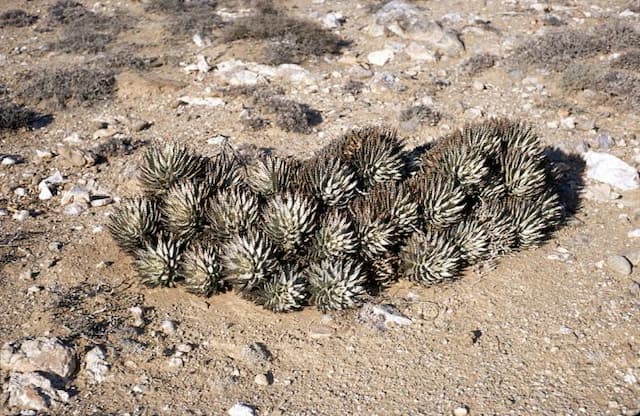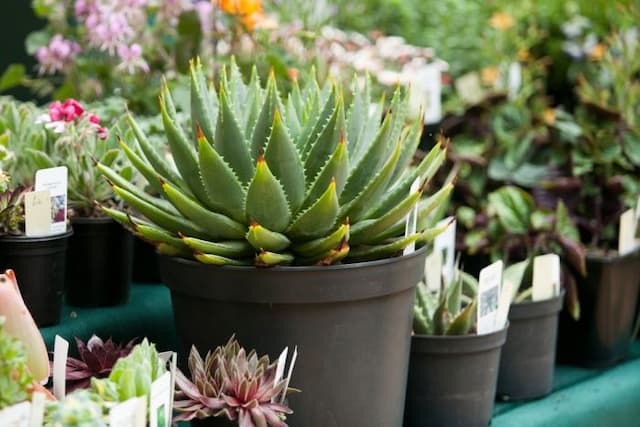Maori Onion Bulbinella hookeri

ABOUT
Bulbinella hookeri, commonly known as Toorang Fill or Maori Onion, is a perennial plant with a distinctive appearance that sets it apart in garden settings or its native habitat. The leaves of this striking plant are long and slender, resembling juicy, fleshy, green straps that form a dense, basal clump. The leaf surface can be smooth to the touch, and the edges are entire without any serration or notches providing a sleek outline. The most noticeable feature of Toorang Fill is its impressive flowering stalk, which stretches above the foliage carrying a dense raceme of numerous star-shaped flowers. These flowers are typically a brilliant sunny yellow or sometimes orange, each one small and with petals radiating out from a central point, giving a sparkler-like effect. The flowers are closely packed along the spike, creating a column of color that is highly attractive to a variety of pollinators. Subtler characteristics of the Maori Onion include the presence of small scales at the base of the flower stalk, and the way the seed capsules swell after the flowering period, becoming visible among the waning blooms. The overall impression of Bulbinella hookeri is one of lush, green vigor punctuated by cheerful spikes of color that brighten up their surroundings.
About this plant
 Names
NamesSynonyms
Hooker's Bulbinella, Cat's Tail, Toad Lily
Common names
Bulbine hookeri, Anthericum hookeri, Chrysobactron hookeri, Bulbinopsis hookeri.
 Toxicity
ToxicityTo humans
The plant commonly known as Maori Onion (Bulbinella hookeri) is not widely recognized as a toxic plant to humans. However, as with many plants, individual sensitivity can vary and it is generally advisable to avoid ingesting parts of plants that are not known to be edible. There is limited information on the specific toxicity and consequences of ingesting Maori Onion, but as a precaution, it should not be consumed to prevent potential adverse reactions.
To pets
Similar to the guidelines for humans, the Maori Onion (Bulbinella hookeri) is not specifically known for being poisonous to pets. Nevertheless, caution should be exercised as pets might have different sensitivities compared to humans. The lack of comprehensive toxicity data means it is wise to prevent pets from ingesting this plant. If a pet does consume Maori Onion and shows signs of distress or illness, it is imperative to seek veterinary care promptly. Symptoms of plant poisoning in pets can include vomiting, diarrhea, drooling, weakness, or changes in behavior.
 Characteristics
CharacteristicsLife cycle
Perennials
Foliage type
Evergreen
Color of leaves
Green
Flower color
Yellow
Height
2 feet (0.6 meters)
Spread
1 foot (0.3 meters)
Plant type
Herb
Hardiness zones
8
Native area
New Zealand
Benefits
 General Benefits
General Benefits- Ornamental value: Bulbinella hookeri, commonly known as "Toad Lily", has attractive foliage and brightly colored flowers, which enhance the visual appeal of gardens.
- Drought resistance: This plant is known for its ability to withstand periods of low water availability, making it suitable for xeriscaping and water-wise gardens.
- Low maintenance: Toad Lily requires minimal care once established, saving time and resources for gardeners.
- Wildlife attraction: The flowers of Bulbinella hookeri attract pollinators such as bees and butterflies, supporting biodiversity.
- Cold hardiness: Being native to New Zealand, it can tolerate cold temperatures, allowing it to thrive in cooler climates.
- Rapid growth: This plant tends to grow quickly, providing fast results for landscaping projects.
 Medical Properties
Medical Properties- Wound Healing: Bulbinella hookeri is traditionally used for its wound healing properties due to components that may aid in skin regeneration.
- Anti-inflammatory: The plant has been used to reduce inflammation in various skin conditions and insect bites.
- Antimicrobial: It contains compounds that have been reported to have antimicrobial effects, which can help prevent infection in cuts and abrasions.
- Emollient: The gel-like sap is used as a soothing emollient for dry and irritated skin.
- Burn Relief: Applied topically to provide relief from minor burns and sunburn, potentially due to its cooling effect and moisturizing properties.
 Air-purifying Qualities
Air-purifying QualitiesThis plant is not specifically known for air purifying qualities.
 Other Uses
Other Uses- As an ornamental plant: Bulbinella hookeri, commonly known as Bulbinella, is often cultivated in gardens for its attractive yellow or orange tubular flowers and aesthetic foliage.
- Insect magnet: The blooming flowers of Bulbinella can attract pollinators such as bees and butterflies to the garden, aiding in pollination of surrounding plants.
- Soil stabilization: Bulbinella can be used in landscaping to help stabilize soil in sloped gardens and prevent erosion due to its clumping growth habit.
- Floral arrangements: The tall, striking flower spikes of Bulbinella are sometimes used in floral arrangements, providing a natural and wildflower-like appearance.
- Garden borders: With its dense foliage, Bulbinella is well-suited for creating defined edges and borders in garden beds and pathways.
- Ground cover: Due to its capacity to form large clumps, it can be used as ground cover in suitable climates, helping to suppress weeds and cover bare soil.
- Ecological indicator: The presence of Bulbinella can indicate certain soil types or environmental conditions in its natural habitat, useful for ecological surveys.
- Photography: The distinctive flowers of Bulbinella make it a popular subject for nature photographers and botanical illustrators.
- Companion planting: When planted with other flora, Bulbinella may help to create a diverse habitat that supports a variety of insects and other wildlife.
- Educational purposes: Bulbinella plants are sometimes included in educational gardens or biodiversity projects to teach about native plant species and their roles in local ecosystems.
Interesting Facts
 Feng Shui
Feng ShuiThe Bulbinella is not used in Feng Shui practice.
 Zodiac Sign Compitability
Zodiac Sign CompitabilityThe Bulbinella is not used in astrology practice.
 Plant Symbolism
Plant Symbolism- Resilience and Survival: The Bulbinella, commonly known as "Maori Onion" due to its bulbous base, is capable of surviving in harsh alpine climates, symbolizing the ability to endure and thrive in challenging conditions.
- Healing and Soothing: Historically used for its medicinal properties, particularly in treating skin conditions, the Maori Onion signifies healing and the soothing of ailments.
- Purity and Innocence: With its delicate, unassuming flowers, the Maori Onion may represent purity and the simple beauty found in nature, untainted by the complexities of the world.
- New Beginnings: As a plant that emerges with robust growth, Maori Onion is often associated with new beginnings or a fresh start, mirroring the cycle of renewal in the natural world.
 Water
WaterTo ensure proper hydration for your Cat's Tail plant, it should be watered moderately. During the growing season, watering once a week with approximately 16 to 24 ounces of water is typically sufficient. Allow the top inch of soil to dry out between waterings to prevent over-watering, which can lead to root rot. During winter, reduce watering to every other week. As a drought-tolerant species, Bulbinella hookeri doesn't require frequent watering, but consistency is key to keep the plant healthy.
 Light
LightCat's Tail thrives best in full sun to partial shade conditions. Ideally, the plant should be placed in a location where it receives at least six hours of sunlight per day. If grown indoors, a south-facing window is a suitable spot as it provides ample light. However, ensure the plant is protected from the harsh midday sun to prevent leaf burn.
 Temperature
TemperatureCat's Tail prefers temperate climates, with ideal growing temperatures ranging from 50 to 75 degrees Fahrenheit. The plant can survive minimal frost, but prolonged exposure to temperatures below 30 degrees Fahrenheit can be damaging. Ensure that Bulbinella hookeri is not subjected to extreme heat above 90 degrees Fahrenheit, which could cause heat stress.
 Pruning
PruningPruning your Cat's Tail is necessary to remove spent flower stalks and encourage bushier growth. Prune immediately after flowering by cutting the flower stalks back to the base of the plant. Additionally, remove any yellowed or dead leaves to maintain a tidy appearance and promote healthy growth. Pruning is typically done annually, and the best time for this task is in the late summer or early fall, after the blooming period.
 Cleaning
CleaningAs needed
 Soil
SoilThe best soil mix for Bulbinella, commonly known as Kiwi Ice Plant, should be well-draining and gritty, with a composition similar to a cactus potting mix or sandy loam. It prefers slightly acidic to neutral pH, ideally between 6.0 and 7.0.
 Repotting
RepottingKiwi Ice Plant should be repotted every 2 to 3 years to refresh the soil and accommodate growth, as it doesn't like to be overcrowded. Repot during its dormant season if possible.
 Humidity & Misting
Humidity & MistingKiwi Ice Plant is tolerant of various humidity levels but prefers moderate conditions. It's best not to expose it to excessively dry or highly humid environments for prolonged periods.
 Suitable locations
Suitable locationsIndoor
Place Kiwi Ice Plant in bright light & well-draining soil indoors.
Outdoor
Plant Kiwi Ice Plant in sunny spot, with well-draining soil.
Hardiness zone
7-10 USDA
 Life cycle
Life cycleBulbinella hookeri, commonly known as Hooker's bulbinella, begins its life cycle as a seed, which upon germinating develops into a small seedling. The seedling grows into a rosette of fleshy, strap-like leaves from which emerges a tall flowering spike bearing clusters of yellow or orange star-shaped flowers. After pollination, primarily by insects, the flowers develop into capsule-like fruits that release seeds. The plant may die back during unfavorable conditions, surviving as underground rhizomes until the environment is conducive for growth. Bulbinella hookeri is a perennial, regenerating from its rhizomes each year to once again produce leaves and flowers. After several years, the plant reaches maturity and continues to reproduce through seeds and clonal propagation by division, maintaining its presence in its native habitat.
 Propogation
PropogationPropogation time
Spring to Summer
The most popular method of propagating Bulbinella hookeri, commonly known as New Zealand bulbinella, is by division of the plant's clumps. This is typically done in the spring or early summer when the plant is actively growing. To propagate by division, carefully dig up an established clump of bulbinella and gently separate it into smaller sections, ensuring that each new section has a portion of the root system attached. These sections are then replanted into well-draining soil, ideally spaced about 12 inches (approximately 30 centimeters) apart to allow sufficient room for growth. Regular watering helps the new plants to establish, but care should be taken not to overwater as bulbinella prefers soil that is moist but not waterlogged.









